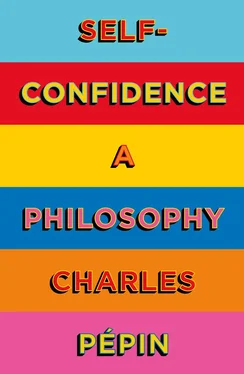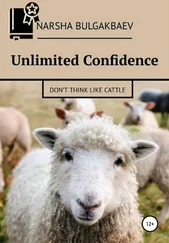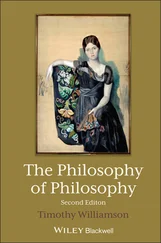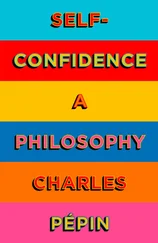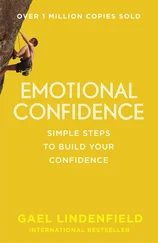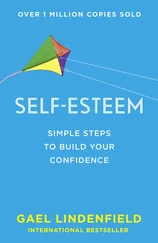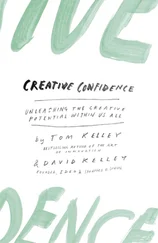The journeys taken by Madonna, Patrick Edlinger, George Sand, John Lennon, Serena Williams and others will give us insight. We aren’t born confident; we become confident. Self-confidence is always something that has to be worked at patiently. It is also something that, once we gain a certain level of effortless command, can give us profound joy.
To probe the mystery of self-confidence, we will look to ancient wisdom and modern philosophers, among them Emerson, Nietzsche, and Bergson. These thinkers often approach the subject indirectly – it’s when they are thinking about freedom, audacity, or individuality that they talk about confidence. We’ll also look farther afield, to psychologists like Boris Cyrulnik and psychoanalysts like Jacques Lacan, and to the writings of researchers and teachers. We’ll also examine the experiences of athletes, fighter pilots, and emergency room doctors, the words of poets, and the visions of great mystics.
Self-confidence is so central to our existence that it can’t be encompassed by a single discipline. We won’t learn to understand how it works by studying it in a laboratory. Instead, we’ll have to observe it in real life, watch its birth and development, adopt its rhythm and follow its movement, its hesitations and swerves. We’ll have to run alongside it just as you run alongside a child – a child who almost falls, catches herself, and then takes off.
1
Confidence through relationships
Gentleness is invincible.
– MARCUS AURELIUS
Self-confidence first comes from others. This statement might seem paradoxical. It is not. Human infants are extraordinarily fragile and dependent. In their first months of life, they are unable to live on their own. The fact of their survival is proof that they have been cared for by others. Their confidence is first and foremost a confidence in their caregivers: self-confidence begins as confidence in others.
It is because we are born at a relatively early stage of foetal development that we need others so much. Embryologists tell us that embryonic cells would require about twenty months to reach maturity. Aristotle had already made the observation that we are born incomplete. It’s as though nature had failed to finish its task, propelling us into existence weaker and more unready than any other mammal. We are born not knowing how to walk, a skill that takes a year on average for us to learn. A colt, on the other hand, needs only a few hours, and sometimes only a few minutes, before it starts to gambol. And we should have self-confidence?
We compensate for this natural deficiency through culture – family, mutual assistance, and education. Thanks to the artistry of human relations, we eventually finish the work that nature left in draft form, and we acquire the confidence that nature withheld from us.
Little by little, children gain confidence in themselves, thanks to the ties they have developed with others, the care that has been lavished on them, the attention focused on them, the unconditional love they receive. Small children don’t feel that this love is given to them for the things they attempt or succeed at. They are loved for what they are and not for what they do. This is the most solid base for the self-confidence they will later acquire. Being loved and looked at in this way gives us strength throughout our life.
Our struggle to achieve self-confidence starts by overcoming what Freud called infantile anxiety. When an adolescent is eager to go out and discover the big wide world, when an adult is confident and manages to get his or her projects up and running, it’s primarily because they were lucky enough to develop early on, in the course of what Boris Cyrulnik calls their ‘precocious interactions’, the inner sense of security that psychologists have determined is so important.
While self-esteem is based on our assessment of our own value, self-confidence is tied to our capacity for action, our ability to venture forth despite our doubts, to take risks in a complex world. To find the courage to adventure into the outside world, you have to have an inner assurance.
In his masterly essay on the ‘mirror stage’, Jacques Lacan describes the moment at which a child first becomes conscious of himself. When children are still at the toddler stage – the average age is between six and eighteen months – they recognise themselves in the mirror. But what exactly happens that first time? The child is in the arms of an adult, who holds him up to the mirror. No sooner has the child recognised himself than he turns toward the adult and asks him with searching eyes, Is this me? Is it really me? The adult answers with a smile, a look, or a few soothing words. The adult reassures the child: Yes, that’s really you. The philosophical implications of this first encounter are enormous – the other is there from the outset between me and myself. I am conscious of myself only through that other person. The child has confidence in what he sees in the mirror only because he has confidence in the other. It’s in the eyes of others that he seeks this inner reassurance; it’s in the eyes of others that he seeks himself.
The same experiment has been tried with rhesus monkeys, which are closely related to us genetically. Their intelligence is apparent in that they quickly start using the mirror to inspect parts of their bodies they can’t see otherwise, like their backs and buttocks. But on first encountering a mirror, they don’t turn toward other rhesus monkeys in the room; they don’t look questioningly at each other. Rhesus monkeys are undoubtedly social animals and learn much from each other, but during their developmental phase they are not as dependent on the bonds between them as humans are; they are not relationship-based creatures to the same extent. Without others, we could not develop our humanity; without others, we could not become what we are.
Look at feral children, those children who have been abandoned at birth and raised by animals (bears, wolves, pigs …), only to be found and reintroduced into human society at a later stage. As François Truffaut’s The Wild Child dramatises (in a film based on real events), these children’s lack of attachment to other humans obstructs their development. They are as frightened as hunted animals, unable to learn human speech, seemingly irrecoverable to humanity. In the very best cases, using great patience and gentleness, the professionals who look after these children have managed to nurture fragile bonds with them and guide them toward limited progress. But their self-confidence always remains precarious, vanishing at the slightest obstacle. In the language of modern psychology, these wild children suffer from a lack of ‘attachment’ to other humans. They never bonded with others during their early childhood. They had no one to protect them, reassure them, speak to them, look at them. Deprived of the inner sense of security that comes from these attachments, they are unable to muster the minimal confidence they would need in order to see the world and other people as anything but hostile.
According to such psychiatrists as John Bowlby and Boris Cyrulnik, if a little boy of two is able to say hello to a stranger who comes into his house, smile at him, approach him, and address or touch him, it’s because his sense of inner security is strong enough to deal with this unfamiliar situation. The people he has attached to have given him enough confidence for him to move away from them and approach the stranger.
The education process has been successful when the ‘student’ no longer needs his teachers, when he has enough self-assurance to leave his teachers behind. By taking a few steps toward the stranger who enters his house, the little boy is already starting to learn to be on his own. Others have shown him confidence, and it’s now his turn to act and show he merits it. In order to set off on his own, he draws on the love and attention given him by his family and those around him.
Читать дальше
